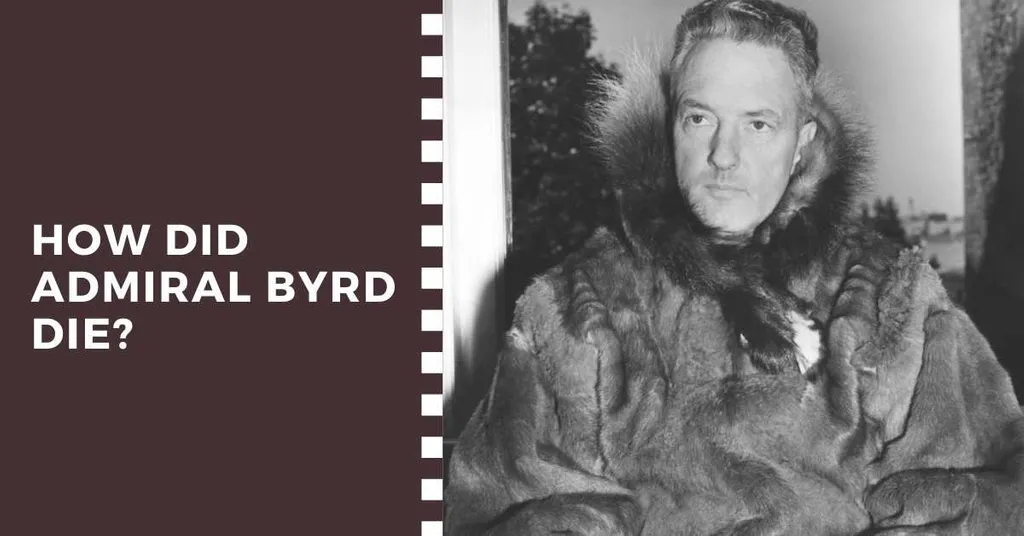Rear Admiral Evelyn Byrd Jr. was a naval officer from America, who made his name through exploration – particularly around the Antarctic region. He led a life of voyages and dangerous adventures, but his death was altogether a much more peaceful affair: Admiral Byrd died in his own home in Boston, on March 11 1957.
Who Was Admiral Byrd?
Admiral Byrd was the son of mother Esther Bolling and father Richard Evelyn Byrd Sr., born on October 25 1888. He was born in Winchester, Virginia, and attended the Virginia Military Institute. However, financial difficulties arose due to these, Admiral Byrd transferred to the U.S. Naval Academy.
After graduating from the Academy in 1912, Admiral Byrd joined the United States Navy and served there until the end of the First World War. He retired from active service on medical grounds in 1916, with the rank of junior-grade lieutenant.
Admiral Byrd married Marie Donaldson Ames in January 1915, and the couple had four children together.
In 1924, Admiral Byrd helped command a small expedition to Greenland, and this gave him the taste for adventure and discovery that would so fervently drive forward his exploration career (I can only imagine that it must have looked very beautiful!).
Admiral Byrd set a personal goal to, in his life, fly above and over the North Pole. In 1926, both he and Floyd Bennett (a United States Naval Aviator) flew – according to their claims – the 15.5 hour flight from King’s Bay in Norway, to the North Pole, and back again. Both men were awarded U.S. Congressional Medals of Honor, and heralded as national heroes.
There are doubters to this tale, though (like to any tale, really!), and associates Admiral Byrd question whether he truly made it to the North Pole at all.
What Further Explorations Did Admiral Byrd Partake In?
In 1927, Admiral Byrd attempted to win the Orteig Prize – a reward for the first Allied aviator to fly without stopping from Paris to New York City (or vice versa). During a practice takeoff with fellow pilots Floyd Bennet and Tony Fokker, the plane crashed. This delayed Admiral Byrd’s attempt to win the Orteig Prize, and in the meantime Charles Lindbergh, another pilot, won the award.
In June 1927, Admiral Byrd (along with three companions) flew over the west of the Atlantic to the east. The flight took a total of 42 hours, with an unfortunate – though not fatal – crash landing on the coast of Brittany, in France.
In 1928, Admiral Byrd publicly announced his mission to fly over and explore Antarctica. He was financially backed by a number of wealthy Americans, and alongside public donations, he was able to fund the expedition.
Did Admiral Byrd Make It To Antarctica?
Incredibly, Admiral Byrd did indeed make it to Antarctica!
His first expedition began in 1928, where he and others stayed at a base named ‘Little America’, which was located at the Ross Ice Shelf in Antarctica. Many photographic explorations, geological studies and scientific discoveries were made at this time – one of these being the discovery of the Rockefeller Mountains. In fact, Admiral Byrd named the area of unknown land behind the Mountains ‘Marie Byrd Land’, after his wife (very sweet!).
On 28 November 1929, Admiral Byrd and fellow crew members Bernt Balchen, Harold June and Ashley McKinley flew from the base to the South Pole and back, a flight totaling 18 hours and 41 minutes. It was considered a success, and remains to be a famous flight even today.
Admiral Byrd would continue to venture to Antarctica, with four more expeditions occurring between 1933 and 1956 (inclusively).
How Did Admiral Byrd Actually Die?
Admiral Byrd, despite his dangerous exploits and cutting-edge adventures, died peacefully in his home on March 11 1957, at the age of 68 years old. He died in his home on Brimmer Street in Boston, and was buried in Arlington County, Virginia.
Who Was Admiral Byrd’s Family?
Admiral Byrd married his wife Marie Donaldson Ames (renamed Marie Byrd) in 1915, and together they bore four children: Richard Evelyn III, Evelyn Bolling Byrd Clarke, Catherine Agnes Byrd Breyer, and Helen Byrd Stabler.
What Were Admiral Byrd’s Accomplishments?
Byrd was key in history’s developments of aviation and expedition. He streamlined the use of airplanes, radios, cameras, ski-planes, seaplanes and helicopters (in later years) in his Antarctic expeditions, and this was fundamental for further explorations.
In addition, Admiral Byrd wrote a number of books detailing his adventures and expeditions: ‘Skyward’ (1930), ‘Little America’ (1930), and ‘Alone’ (1938).
What Awards Did Admiral Byrd Receive?
Admiral Byrd received a myriad of awards for his explorative work. These include (but by no means are limited to!): the Medal of Honor, special commendations, the Silver Lifesaving Medal, the Distinguished Flying Cross, the Navy Cross, and the Navy Distinguished Service Medal.
In addition, the Boy Scouts of America made Admiral Byrd an ‘Honorary Scout’, and a number of buildings and places were named in his honor.






